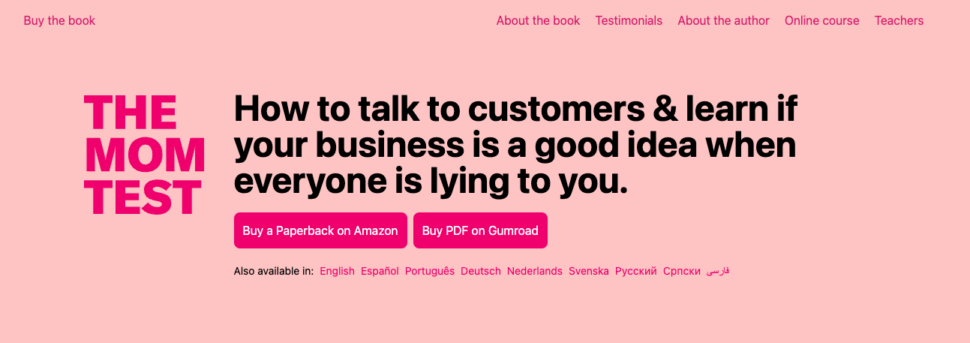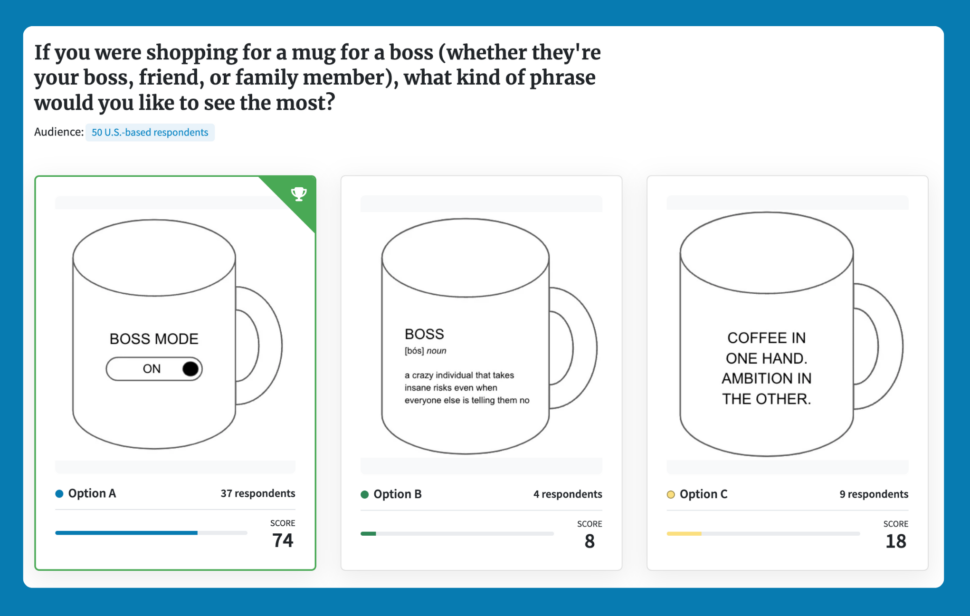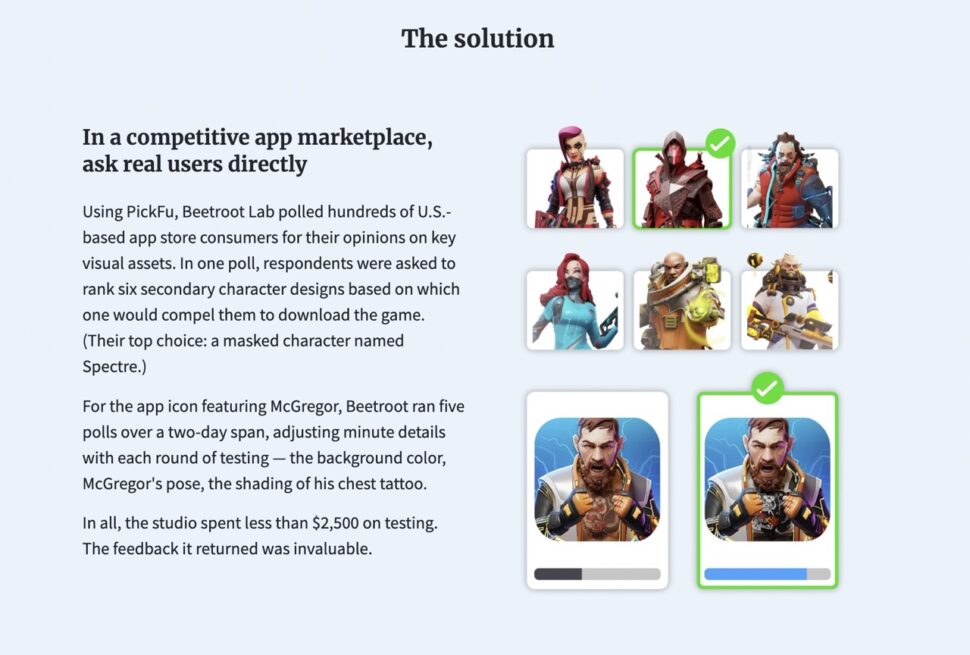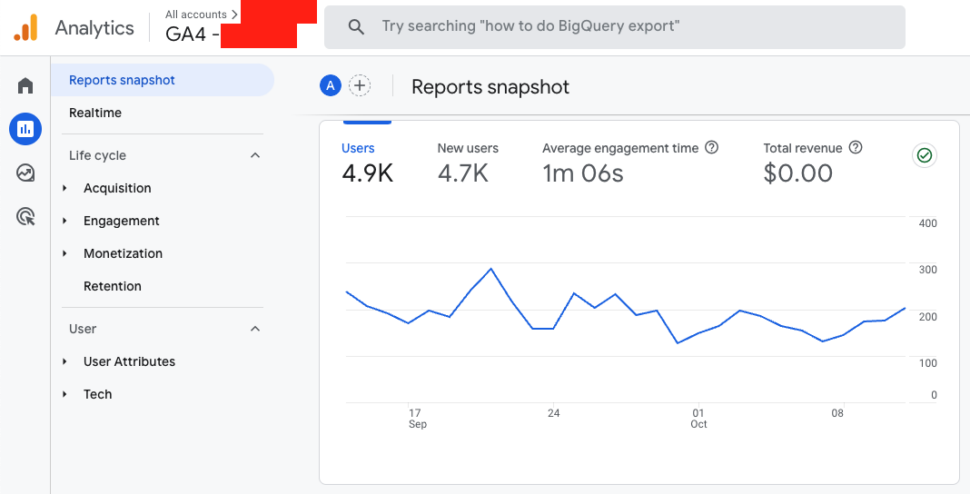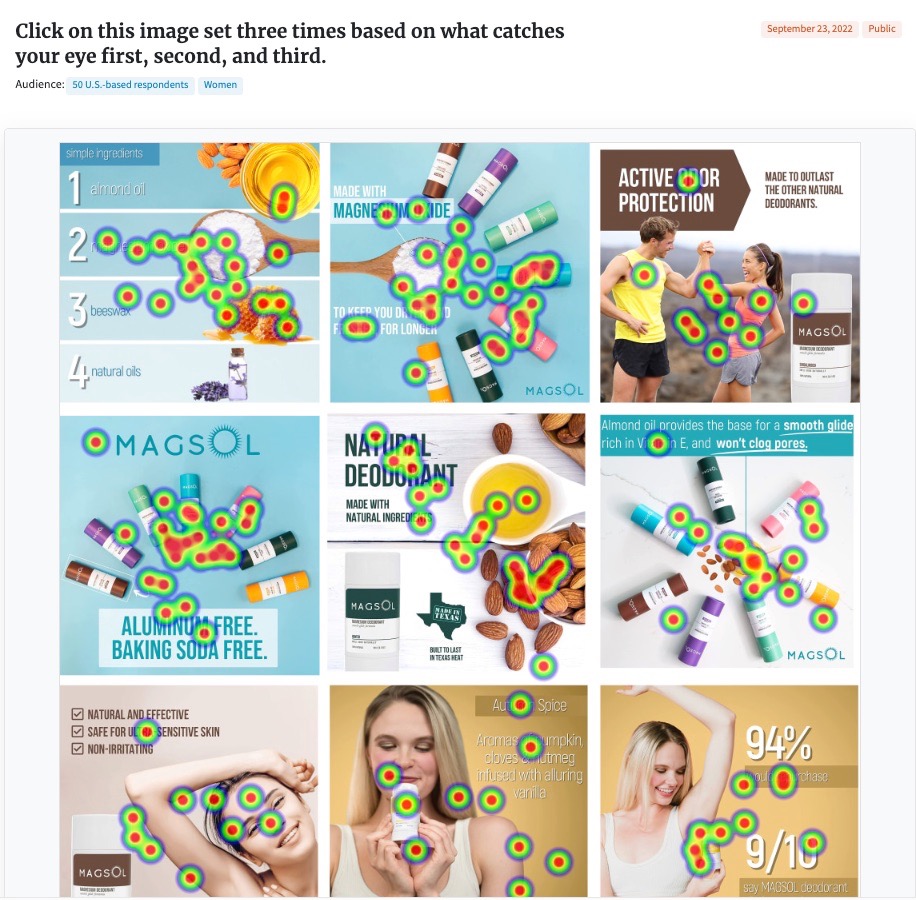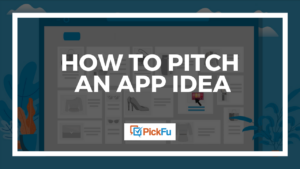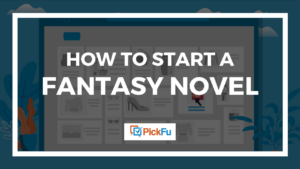As technology advances, SaaS (software as a service) is only going to get more popular. The SaaS market is forecasted to keep growing at lightning speeds. According to Gartner, end-user spending on SaaS could reach over $240 billion by the time we’re done with 2024.
So if you’re thinking about developing a SaaS solution, you’re on a potentially profitable path. But you also have a ton of competition. That’s why it’s crucial to validate your SaaS ideas before you invest in full-scale development.
At PickFu, we know a little something about diving headfirst into the SaaS market. We want to share five different ways to approach the validation process for your next exciting business idea.
But first, let’s talk about why getting your product idea validated is so important.
Why is SaaS idea validation important?
If you’re like a lot of software developers, you probably enjoy spending time on your computer, deep in a project (or three). Going out and socializing might not be high on your to-do list, and the idea of talking to people about software might feel… awkward.
We get it. We’ve been there. But no matter how amazing an idea sounds in your head, you have to find out if people actually need it.
This is the core goal of the idea validation process.
If no one needs your product, it’s going to flop. When you actually ask potential customers for their feedback, you’re in a much better position than if you hold your breath and hope for the best. If they don’t love an idea, you can revise it and try again. That way, you don’t waste money on something that won’t sell.
Plus, showing that your product has been tested and has initial interest from users can make it easier to attract investors. They’re going to be more willing to fund a project if they can see cold, hard data that shows it’s viable.
Top tips for validating your SaaS startup idea
Ready to know how to do market research for a startup? Without further ado, here are five top ways for entrepreneurs to validate SaaS ideas.
1. Do the “Mom Test”
The “Mom Test” is a concept from the book by Rob Fitzpatrick, and it’s popular with entrepreneurs around the world.
Why is it called the Mom Test? Because it’s about finding a way to get honest feedback from someone who would normally only give you positive feedback – like your mom.
The Mom Test has three core principles:
- Talk about their life instead of your idea: Ask questions about the person’s behavior and experiences without mentioning your idea. This helps you avoid biased compliments and gets you useful, honest insights.
- Ask about specifics in the past instead of opinions about the future: Why? Because real data about past behaviors is usually more reliable than potential future behaviors.
- Talk less and listen more: Gather as much information and insight as possible by encouraging the people around you to talk about their experiences and needs.
Using the Mom Test to validate a SaaS idea involves having conversations that draw out honest insights. At the same time, you must avoid pushing whoever you’re talking to into giving you responses they think you want to hear.
So don’t tell whoever you’re talking to about your idea. Instead, have a casual conversation. Organically bring up the challenges you face during a workday. Then turn the conversation over to them, asking open-ended questions like “What’s the most time-consuming task you do each day?”
Your goal is to understand the person’s pain points – without mentioning your solution. That would taint their answers. They’d feel obligated to tell you how cool your solution sounds and how perfect it would be for them.
Next, ask them about specific past behaviors. For instance, you could ask, “Can you tell me about a time you tried to solve this issue? What did you use and how did it go?” This will give you reliable quantitative data because it’s rooted in real experiences. Not speculations about potential tools or solutions.
Finally, encourage your conversation partner to share stories with you. Keep an ear out for hidden insights about their needs and frustrations. Pay attention to any makeshift solutions they’ve thought of to solve problems. These can be problems your SaaS solution solves.
You can find Mom Test respondents just about anywhere. Start with Reddit, LinkedIn, and Facebook. Look for subreddits and groups that match your target audience.
Then, dust off your professional clothes and head out of the house. Attend conferences, workshops, and meetups related to your SaaS product’s niche. These events are full of potential users who are already interested in the industry.
2. Start a crowdfunding campaign
Crowdfunding isn’t just about raising money. It’s also about finding potential customers. If you can drum up a crowd of early supporters, there’s a good chance your SaaS idea will hack it once it goes live.
Whether you’ve got a micro SaaS idea that appeals to a super-niche group of people or a broader product idea, a crowdfunding campaign can help.
So head over to Indiegogo or Kickstarter and create a compelling campaign. Look at the popular campaigns for inspiration on how to structure yours.
Make sure you tap into the community aspect, too. Crowdfunding campaigns provide an opportunity for you to build an email list and create a community of early adopters.
These backers are often highly engaged and can provide valuable feedback that can be pivotal in refining the product. They might just be the loudest advocates of the product post-launch.
3. Launch a beta testing program
Launching a beta testing program for a minimum viable product (MVP) is essential for seeing if your SaaS idea matches up with real-world needs. Here’s how to do it:
- Define your goals: Identify what you want to test. Specific features? Overall user experience? Scalability? Having clear objectives will help you measure success and gather focused feedback from your early users.
- Build your MVP: Create a no-code MVP that includes only your SaaS idea’s core functionalities. Your MVP should address the primary problem your product aims to solve. Just make sure it’s functional enough for early users to explore it and provide feedback.
- Recruit beta testers: Find a group of people from your target market who represent potential real customers. If you have a crowdfunding campaign, you can find users there. You can also ask LinkedIn users, connections from industry events, and Facebook group users.
- Collect and analyze feedback: Use a systematic approach to collect feedback using tools like PickFu or Google Forms. Analyze this quantitative data to spot common issues with the SaaS product’s functionality. Plan for how you’ll improve on those issues when you actually code the product.
- Plan for your product build: Use insights from beta testing to build the product for launch – or go back to the drawing board.
Need more guidance on this validation step? Our guide to prototype testing can help you get started.
4. Harness the power of PickFu for market validation
Need to conduct a survey or run proof of concept testing? PickFu offers an easy way for SaaS companies to test out new ideas with simple polls that pack a powerful punch.
Rather than just give you a winner with quantitative data, our built-in panel of consumers (which you can target to match your ideal audience) also give you the why in the form of valuable, in-depth written feedback.
With our easy-to-use platform, you can test:
- Landing pages: Before building out a full product, SaaS companies can create basic versions of their website’s landing page. You can then ask potential users on PickFu for their first impressions with an open-ended poll. Your respondents will provide detailed, written feedback. This, in turn, helps you understand how they perceive the product – and what changes you might need to make pre-sales.
- User interface (UI) design: You can test different UI designs in the early stages to see which is more intuitive and appealing to users. Just upload two or more mockups or screenshots of your app interface, and our respondents will tell you what they think about it.
- Marketing messages: When it’s time to create ads and marketing copy for your SaaS product, PickFu can help you make sure the messaging clicks. You can test everything from headlines and product descriptions to CTAs and Google ad templates. PickFu helps you get your messaging SEO-ready.
- Branding elements: Struggling to figure out how to brand your lean startup? Test your logos, color schemes, and brand perception with PickFu.
- Customer segmentation: You can use PickFu to validate assumptions about your target market. Just run polls across different demographic segments to verify which groups are the most interested in your product.
- Value propositions: Test and validate different value propositions to see which key features are most compelling to your potential users.
- Email campaign effectiveness: Before launching a full email marketing campaign, you can test subject lines or email content with a segment of your audience on PickFu. Respondents can help you get a feel for the type of subject lines that’ll make people open the email, for instance.
You can even use PickFu to evaluate pricing – in other words, to see how much people would pay for your product.
Want to see what PickFu looks like in action? Check out this case study, where our SaaS solution helped a Latvian mobile game studio, Beetroot Lab, validate whether Dystopia: Contest of Heroes would appeal to American audiences.
(Hint: it did.)
We also help established entrepreneurs refine their marketing strategies. Mojiworks – maker of the popular Snapchat game Ready Chef Go! – routinely tests its creative assets with PickFu to stay ahead of competitors.
So if you’re thinking, “I have an idea for an app!” you can test it with PickFu.
5. Refine your approach with analytics and heat maps
SaaS validation doesn’t stop when your product goes live. It’s important to measure user interest in real time after launch. Using analytics and heat maps is a powerful customer feedback strategy for digging into these insights.
The goal here isn’t necessarily to validate an idea. It’s to validate the actual features of your SaaS tool and refine them quickly if needed.
So what are analytics tools and heat maps?
Analytics tools collect and analyze data on how users interact with your SaaS application. They track metrics like user engagement, retention rates, and conversion paths.
Heat maps complement these analytics by showing you a visual map of where users click, scroll, and spend time on your site.
Together, these tools can show you which features are getting lots of love – and which aren’t.
For example, a heat map can show if a key feature of your SaaS product is getting overlooked. This could indicate a need for better visibility. Or, it could mean the feature isn’t as usable as you’d like.
Several customer insights platforms offer excellent analytics and heat mapping capabilities. Google Analytics is a staple for visualizing your funnel and tracking key user engagement metrics. Tools like Hotjar and Crazy Egg provide detailed heat maps that show how users navigate through your pages. To interpret the data they give you, look for patterns and anomalies.
If you’re wondering if PickFu has a heatmap feature too, well…
We sure do. And with our Click Tests, you’ll get a heat map and the written feedback that explains why respondents clicked where they did.
Learn more about the best types of usability testing.
Refine your go-to-market strategy
Ready to find out what your potential customers think of your SaaS idea? PickFu makes it easy to drive outreach and customer acquisition with our step-by-step guide to idea validation. Then, get your project off to the right start with easier user testing.
Start tapping into valuable consumer insights today – sign up for free and run your first PickFu poll within minutes.
FAQs
How do you validate a SaaS business idea?
Begin with thorough market research to understand your competition and target audience. Gather user feedback through surveys, interviews, and beta testing with a minimum viable product (MVP). Use tools like PickFu for rapid, targeted feedback to refine your product based on user insights.
How do you validate your startup idea with customers?
Start by chatting directly with potential users through interviews or informal conversations. Use strategies like the Mom Test to gather honest feedback about what they need and how your product could help. You can also use surveys for broader insights, and test your idea with a prototype to see how it performs in real-world scenarios.

